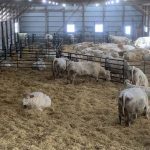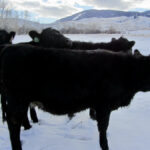
Tag Archives cows

Preparing cattle for the breeding season

Vet Advice: Vibriosis

Comment: Beware Trojan cows

Continuous tie-stall housing to be phased out in new dairy code of practice
Producer, animal welfare groups praise new code; some drawbacks were noted

Dealing with retained placentas in beef cows
Strive to prevent retained placentas as much as possible, says a large animal vet

Cow body condition and animal performance
How much fat a cow is carrying through the winter affects everything from her ability to maintain her body temperature to the development of her unborn calf

Shelter, feed keys to successful winter calving
A Charolais producer and a beef specialist share tips for calving in the bitter cold of winter

News from the Canadian Simmental Association
Purely Purebred, news from the January 2023 issue of Canadian Cattlemen

Feeding the lactating beef cow
Nutrition with John McKinnon

Setting up young cows for success
A researcher and a seedstock producer explain why a little extra consideration for heifers and first-calvers through the winter pays off later on, and offer ideas on how to make heifers’ lives easier



